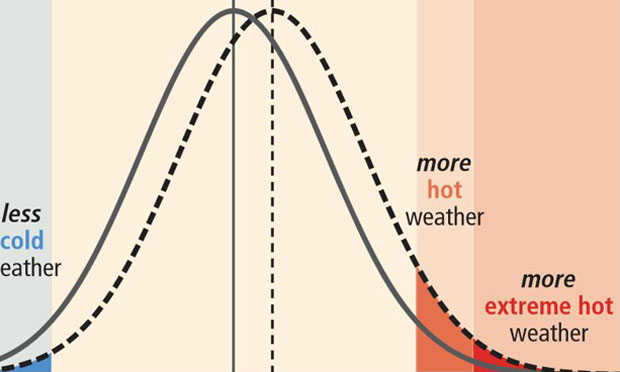
In 2007 the U.N. Intergovernmental Panel on Climate Change released its fourth report, still the definitive document on the scientific consensus on climate change. In advance of the fifth report, slated for publication in 2012 and 2013, the IPCC has released a summary of an upcoming special report, “Managing the Risks of Extreme Events and Disasters to Advance Climate Change Adaptation.” Described as a “worldwide scientific collaboration,” the report involves the work of 220 authors from 62 countries.
The new publication examines the potential impacts of climate change, including rising temperature, rising sea levels and increasing storm intensity, and proposes strategies for managing them. In the report, event probabilities are indicated using the phrases “virtually certain” (a 99% to 100% probability), “very likely” (a 90% to 100% probability), and “likely” (66% to 100% probability).
The report’s findings include:
- Global nighttime and daytime temperature extremes are “very likely” to increase, with an “overall decrease in the number of cold days and nights, and an overall increase in the number of warm days and nights.” This is “likely” to be the result of human activity, the report states.
- Climate change models predict a “substantial” increase in temperature extremes by the end of the 21st century. “It is very likely that the length, frequency and/or intensity of warm spells, or heat waves, will increase over most land areas…. A 1-in-20 year hottest day is likely to become a 1-in-2 year event by the end of the 21st century in most regions.”
- The frequency of heavy precipitation events is “likely” to increase over many areas of the globe, in particular high latitudes and tropical regions. In addition, “heavy rainfalls associated with tropical cyclones are likely to increase with continued warming.”
- The maximum wind speed of the average tropical cyclone is “likely” to increase. On the other hand, the global frequency of cyclones is “likely” to decrease or remain unchanged.
- Because of increases in mean sea level, it is “likely” that has there has already been an increase in coastal high water extremes. Continuing increases in sea levels are “very likely” to contribute to upward trends in extreme coastal high water levels in the future.
- There is “high confidence” that coastal locations currently suffering from erosion and flooding will continue to do so because of rising sea levels.
- The combination of rising sea levels with increased maximum wind speeds of tropical cyclones are “very likely” to pose a problem for tropical island states.
- Temperature changes in mountainous regions that result in glacial retreat or permafrost degradation could trigger “slope instabilities, movements of mass, and glacial lake outburst floods.” In addition, “changes in heavy precipitation will affect landslides in some regions.”
The report summary concludes with a table of risk management strategies. These include tactics for reducing exposure and vulnerability, sharing risk, increasing resilience, and improving recovery efforts.
Keywords: science, global warming, greenhouse gases, fossil fuels, emissions, carbon
